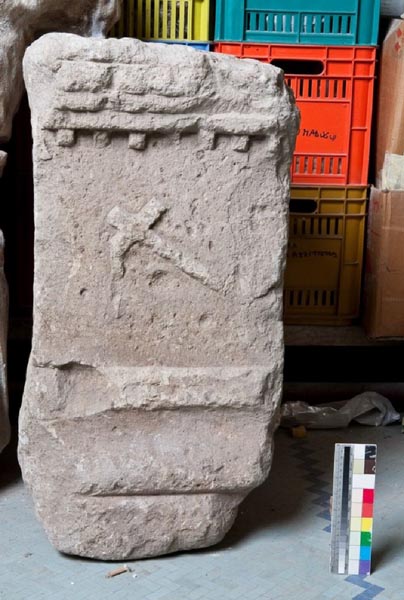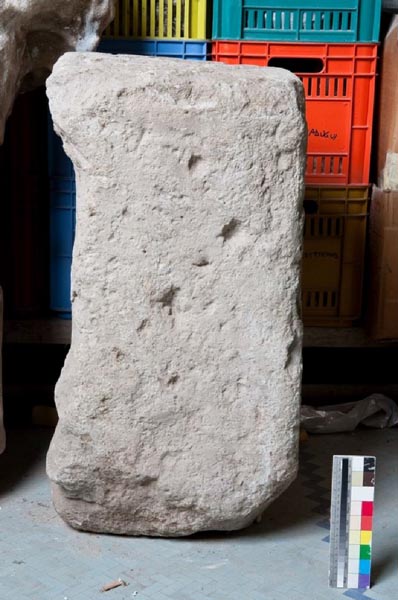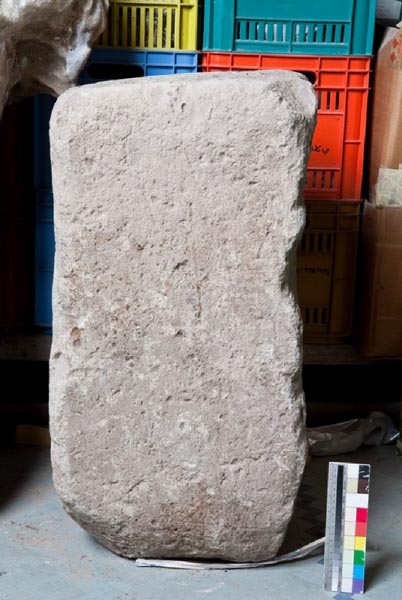Funerary inscription
The funerary memorial stone was found at the beginning of the last century near Fordongianus. The small monument was chiselled and reworked in an undefined period, to probably be used as building material. This led to the loss of many details, but you can recognise the parallelepiped shape partly preserving the crown formed by a triple moulding underlined by a row of teeth. The symbol of the axe carved in relief on one side is still well preserved (figs. 1-3).



The inscription by the husband shows, in memory of his wife Germana who died aged 48, with dedication to the God's Hands. The tomb was then placed under the protection of the axe, portrayed in relief on a side of the stone.
The sign of the axe is widely known and spread all over the western Roman world, and is found on tombs from the full imperial period. Its interpretation is not unique and shared by all scholars: the most commonly accepted meaning interprets the axe as a sign intended to ward of evil and protect the tomb; others think that it indicates the type of burial, buried instead of cremated; other still interpret the axe as a mystic symbol.
The name Germana is not typically Roman and leads back to a local origin of ancient Punic tradition. Based on the style of letters, the inscription is dated between the II and III cent. A.D.
Bibliografia
- M. G. ARRIGONI BERTINI, Il simbolo dell’ascia nella Cisalpina romana, Faenza 2006.
- MARCELLA BONELLO LAI, Il simbolo dell’ascia nelle iscrizioni funerarie latine della Sardegna, in Nuovo Bollettino Archeologico Sardo, 1, 1984, pp. 201-227.
- G. SOTGIU, Iscrizioni latine della Sardegna, Padova, 1961, pp. 132-133, n. 198.

 VR
VR